Synchronizing data
Data from IIH Essentials can be synchronized to external storage locations to back up data automatically. The data synchronization works unidirectionally, i.e., from IIH Essentials to the external system, for instance, to an MQTT broker. To synchronize data, first a data destination needs to be set up and then the data synchronization needs to be defined. The synchronization needs to be defined as a hierarchy per data destination that holds the desired assets, aspects and attributes. It is also possible to set up multiple data destinations and define several synchronizations so that your data is backed up redundantly. This means that a single data destination can support multiple data synchronizations and a single attribute or entity can be synchronized to multiple data destinations.
Steps to synchronize data
To set up a data destination, first define the data destination and then adapt the proxy settings, if required.
-
In the navigation bar, click "Data Destinations".
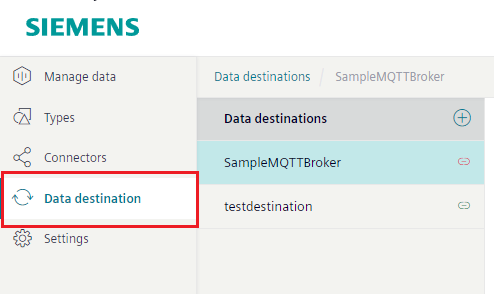
-
Set up a new data destination with
 .
.
Three data destination types can be used at the moment:Info
For more details on how to set up a data destination see the dedicated section to set up every type of data destination in the section Setting up the data destination.
- Check the port number and note it down.
- Click "Save".
- Define the destination hierarchy with desired attributes or entities for the data destination.
For more details see the section Building a Destination Hierarchy.
Proxy set up for Industrial Edge Devices
Note
The following steps are only relevant if the IED is running behind a proxy so that a proxy configuration is required for Internet access.
- Open the "Settings > Connectivity" menu in the Industrial Edge Device and click on the "Proxy Network" tile.
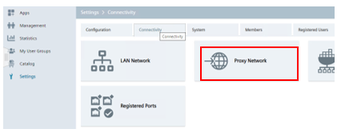
- Enter the IP address and port of the proxy in the "Proxy" tab.
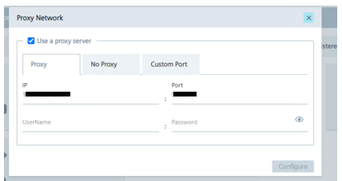
- In the "Custom Port" tab, select the protocol "http" and enter the port number you noted down for the data destination during the set up.
- Click "Configure".
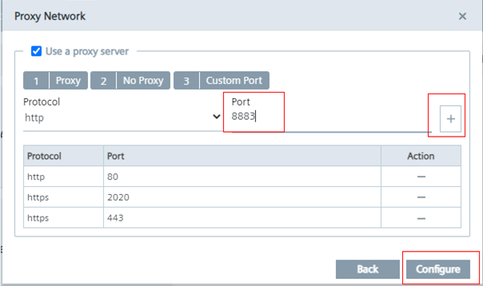
Migration of entity/asset level synchronization to destination hierarchy synchronization
In IIH Essentials V2.1.1 and earlier, data synchronizations had to be created individually for each asset, aspect, or attribute, including their underlying elements. This defined a model that would be synchronized to the data destination with the selected assets, aspects, and attributes. In the IIH Essentials user interface, the option to create a data synchronization was available at the element itself under the "Synchronization" tab.
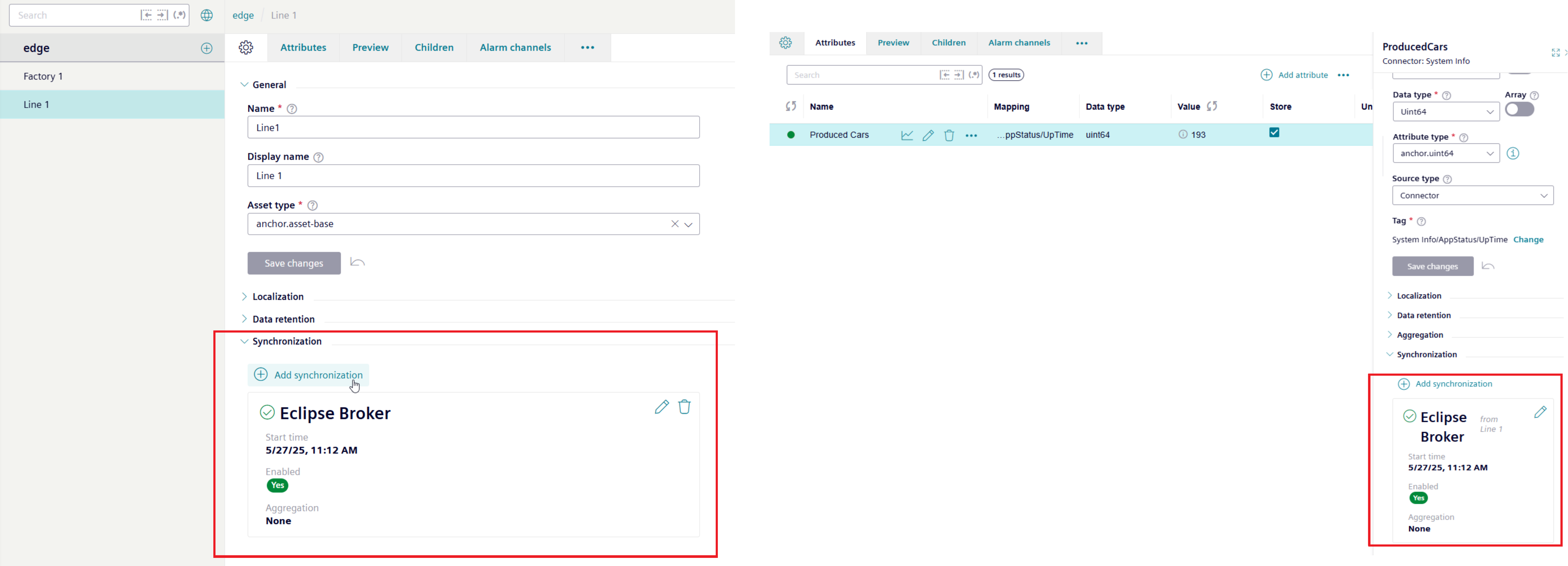
Starting with IIH Essentials V2.2.0, the model to be synchronized with a data destination is defined through a destination hierarchy for each data destination. Within this hierarchy, you can include assets, aspects, or attributes from the IIH Essentials model, or create new ones specifically for that destination hierarchy.

Data synchronizations created in IIH Essentials V2.1.1 or earlier are automatically migrated to the destination hierarchy synchronization model. The new destination hierarchy will include all assets, aspects, and attributes that were previously synchronized to a single data destination. For example, as shown above, a data synchronization to "Eclipse Broker" for the asset "Factory 1" in IIH Essentials V2.1.1 — including all its underlying entities and attributes — will be migrated to a destination hierarchy for "Eclipse Broker" in V2.2.0. Aggregation settings and synchronization start times are also carried over during the migration.